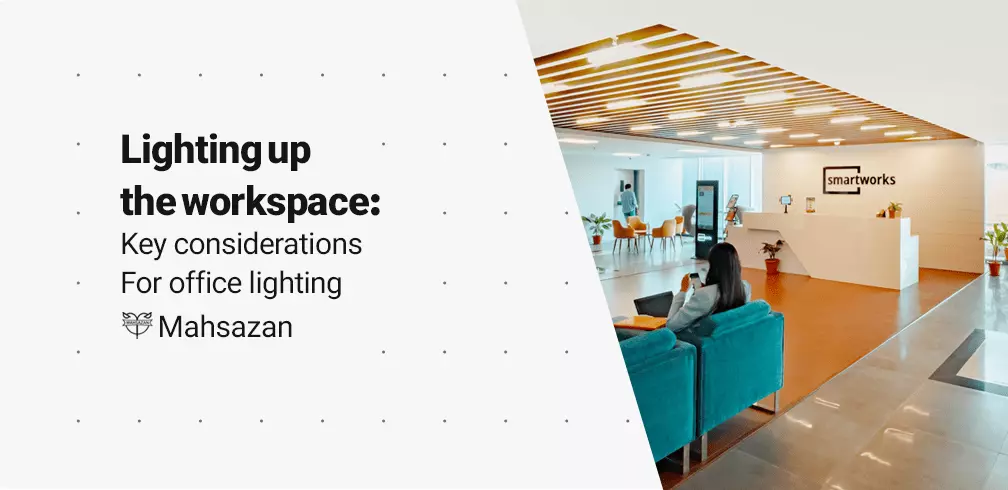One of the important factors that is often overlooked is the lighting of office environments. Light plays an important role in increasing productivity, reducing eye pressure and creating a pleasant environment. In this article, we will explore the different types of office lighting, factors to consider when choosing the right lighting, common mistakes to avoid, and tips for improving office lighting. By the end, you’ll have a comprehensive understanding of how to effectively light your workspace.
Types of office lighting
When it comes to office lighting, there are several options to consider. The two main categories are natural light and artificial light.
Natural lighting
Natural light refers to the use of sunlight to illuminate the workspace. Natural light not only provides adequate lighting, but also provides numerous health benefits to employees. Sunlight is known to boost mood, increase vitamin D levels, and regulate the body’s natural sleep-wake cycle. Therefore, incorporating windows, skylights and glass walls into your office design can maximize natural light.
Artificial light
On the other hand, artificial lighting includes different types of electric lights such as fluorescent lamps, LED and ceiling panels. These lights can be adjusted to meet specific lighting needs and are suitable for areas with limited access to natural light. In addition, artificial light allows customization of color temperature and intensity, which can increase productivity and create a comfortable work environment.
Factors to consider when choosing office lighting
Choosing the right office lighting requires careful consideration of several factors. These factors include the purpose of the space, the tasks performed, the age group of the employees and the overall atmosphere you want to create. Let’s examine these factors in detail.
The purpose of space
Different areas in the office may have different lighting needs. Softer For example, meeting rooms may need brighter lighting to facilitate discussion, while breakout areas may benefit from softer, more ambient lighting. Consider the function of each space and adjust the light accordingly.
Tasks done
The type of work done in the office should determine the lighting conditions. Jobs that require precision work, such as design or data analysis, may require brighter, more focused lighting. Conversely, spaces used for brainstorming or creative thinking may benefit from softer, more diffused lighting.
Age group of employees
The age group of employees can affect their visual needs. Older employees may need brighter lighting due to age-related vision changes, while younger employees may prefer softer lighting.
general environment
The lighting in your office should be in harmony with the desired atmosphere and company culture. Consider color temperature, which affects the mood and perception of a space. Cooler temperatures increase alertness, while warmer temperatures create a cozy and relaxing environment. Finding the right balance is key.
Common office lighting mistakes you should avoid
To ensure effective office lighting, it’s important to avoid common mistakes that can compromise comfort and productivity. Here are some mistakes to be aware of: Insufficient lighting Insufficient lighting can strain the eyes and lead to reduced productivity.
Make sure the office is well lit, especially in areas where precision work is done. Do regular light fixtures for areas that may need light.
Flickering lights
Flickering light can distract you and cause headaches and eye strain. If you notice flickering lights in your office, it’s important to address the problem quickly. Replace defective bulbs or consult an electrician to investigate the cause.
Energy efficiency and office lighting
Energy efficiency is an important consideration when choosing office lighting. By choosing energy-efficient lighting solutions, you can reduce your carbon footprint and save on energy costs. Here are some energy-efficient options to consider:
LED lighting
LED panels are much more energy-efficient than traditional incandescent lamps and have a longer lifespan. They consume less electricity, emit less heat and provide excellent quality lighting. Consider replacing old light bulbs with LED alternatives.
Motion sensors
Motion sensors can help conserve energy by automatically turning off lights in unoccupied areas. They detect motion and ensure that lights only turn on when needed. Install motion sensors in hallways, conference rooms, and other low-traffic areas to maximize energy efficiency.
Withdrawal per day
Daylight harvesting involves using sensors to adjust artificial light based on the amount of natural light available. This can help reduce energy consumption by using natural light during daylight hours. Combining daylight harvesting systems can lead to significant energy savings.
Tips to improve office lighting
Increasing the lighting in your office doesn’t have to be a daunting task. Here are some practical tips for improving workplace lighting:
Maximize natural light
If possible, use natural light by placing workstations near windows or using glass walls. Natural light not only saves energy, but also has many health benefits.
Use adjustable lighting
Allow employees to adjust their lighting based on their needs and tasks. This can be achieved through task lighting, adjustable desk lamps or dimmer switches. Individual control over lighting increases comfort and productivity.
Result
Office lighting is a critical aspect of creating a productive and comfortable work space. By understanding the importance of office lighting, considering different types of lighting, avoiding common mistakes, and implementing energy-efficient solutions, you can create an environment that increases employee well-being and productivity. Remember to prioritize ergonomics, lighting design, and individual preferences when lighting your workspace. With these considerations in mind, your office lighting will contribute to a happier and more efficient workforce.
You can use the various light lines of Danesh Banian Meh Sazan Company to provide lighting for your offices.

